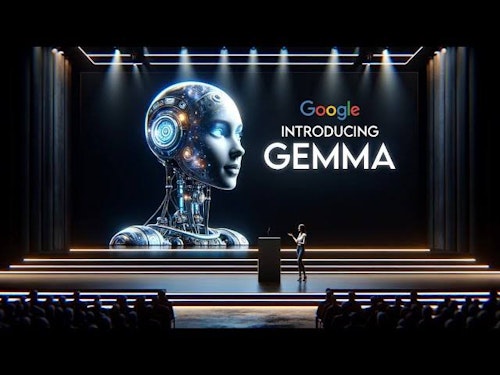Google Gemma: what is it and how is it different from Gemini
Google Gemma, how different is it from Gemini? here is all you need to know about Google Gemma, Google's latest artificial intelligence.
Written By
Innocent BenjaminWriter | Editor | SEO expert
Reviewed By
Joy EmehWriter| Editor| Content Strategist

In addition to Gemini, there is another AI model aimed at a different purpose and intended for developers rather than end users. This article explains Google Gemma, a new artificial intelligence model presented by the search engine company.
We will start the article by explaining exactly what Google Gemma is and its main features. Then, we will tell you what it is for and what uses Google has planned for this model. We will conclude by telling you how you can access it if you are a developer.
What is Google Gemma?
Gemma is a family of artificial intelligence language models. This means that a family is not just a specific language model, but it is a name that has different variants with different characteristics, so that one or the other can be used depending on what you want.
In this case, they are large languages, and their main characteristic is that Google wants others to be able to use and modify them depending on what they want to do with them. The models are trained, but will be flexible to adapt to users.
In this way, Google sells Gemma as an "open" model. They really are not completely open models, because they have some usage restrictions established by Google in the license terms. However, they are open enough in their approach that developers can use them with considerable versatility.
So, instead of offering a model like Gemini, which retains all its features and options regardless of its versions, Gemma aims to be more flexible. It allows developers to manipulate and customize it to decide how to use the AI according to their specific needs.
Gemma is smaller in size than other models, allowing it to run efficiently on local devices, so that it can be used for the development of AI applications in decentralised environments. Thus, Gemma can be used to carry out research or to create tools based on artificial intelligence.
Google says that it has developed this artificial intelligence based on the advances obtained when creating Gemini, and that it is the fruit of the work of both the DeepMind laboratories and other specialized teams working in the company.
Finally, Gemma has two different models , which are the Gemma 2B and Gemma 7B . The B stands for "billions" of parameters, so they are a smaller variant and a much larger one at the level of training parameters, in order to be able to be used on devices of different sizes.
What is Gemma for?
Gemma serves as a foundation on which researchers and developers can work. They are models that are already trained, but that offer versatility so that developers can manipulate it to decide how to use it.
With this, users who decide to use Gemma will be able to modify the models with additional training , adjusting them to their specific needs. In this way, developers will be able to make the most of the model's capabilities.
This AI has been designed primarily for natural language processing in English , although Google says its goal is to collaborate with the community to address the needs of other languages.
In addition to generating text from prompts, with the tools offered by Google it will also be possible to train it to perform other types of specific tasks, ranging from code generation to solving mathematical problems.
How to use Gemma
Developers who want to access Gemma will be able to do so in different ways. The main one will be through the Google Cloud platform , which will allow them to perform a wide range of AI tasks directly from the cloud and without having to use the local computing of a device, although this is a paid option.
It will also be possible to download it through the Kaggle platform to work from a computer, although in this case it will be necessary to have enough power to make it work.